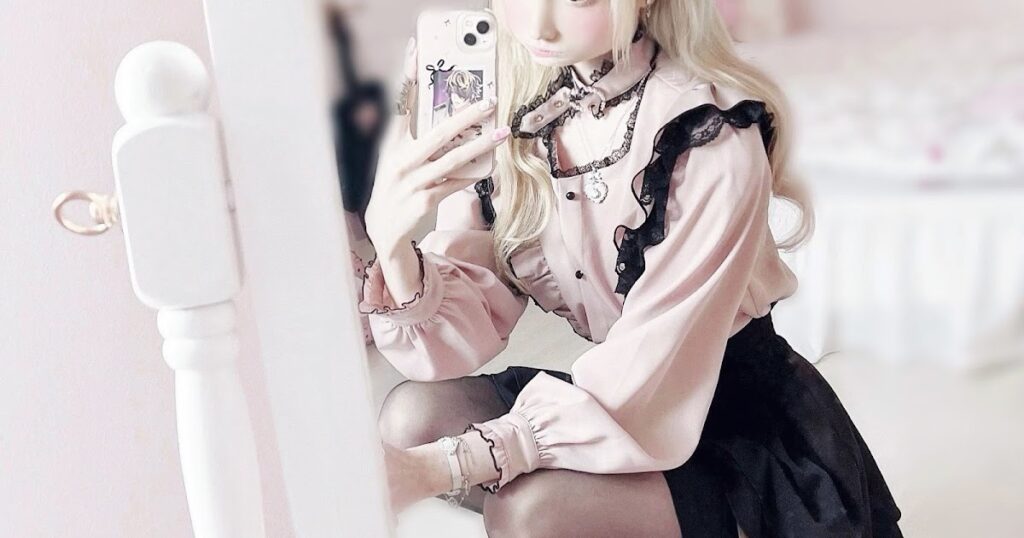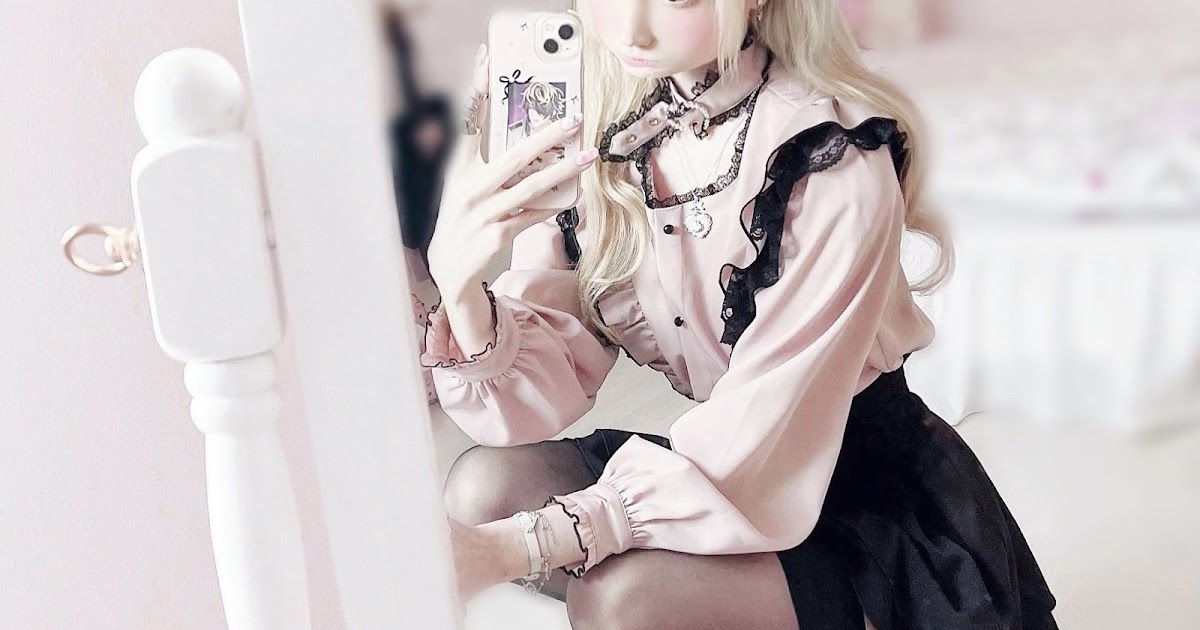
Exploring Jirai Kei Outfits: A Comprehensive Guide to the ‘Landmine Girl’ Aesthetic
Jirai Kei, translating to ‘landmine type,’ is a Japanese street fashion subculture that has gained increasing attention in recent years. Characterized by its blend of kawaii (cute) and yami kawaii (sick-cute) elements, jirai kei outfits present a complex and often misunderstood aesthetic. This article aims to provide a comprehensive overview of jirai kei outfits, exploring its origins, key components, and the cultural context that shapes this unique style. Understanding jirai kei requires delving into its nuanced expressions of vulnerability, rebellion, and the search for connection in a digital age.
Origins and Influences of Jirai Kei
The roots of jirai kei can be traced to several intersecting cultural phenomena in Japan. The rise of social media, particularly platforms like Twitter and Instagram, provided a space for young people to express their emotions and connect with others who shared similar feelings. Concurrently, the increasing pressures of modern society, including academic stress, social expectations, and economic uncertainty, contributed to a sense of alienation and anxiety among some youth. The ‘yami kawaii’ aesthetic, which incorporates themes of illness, self-harm, and depression in a visually appealing way, served as a precursor to jirai kei. Jirai kei differentiates itself through a more overt emphasis on seeking validation and a perceived need for rescue, often symbolized through makeup and accessories.
The term ‘jirai onna,’ or ‘landmine girl,’ refers to a woman who appears outwardly attractive and well-adjusted but is perceived as having underlying emotional instability or a tendency towards dramatic behavior. This label, often used pejoratively, has been reclaimed by those who identify with the jirai kei style as a form of self-awareness and a rejection of societal expectations to always appear happy and perfect. The fashion becomes a visual representation of this internal struggle.
Key Elements of Jirai Kei Outfits
Jirai kei outfits are instantly recognizable due to their distinct combination of elements. Here’s a breakdown of the key components:
Color Palette and Fabrics
The dominant colors in jirai kei are typically pastel shades, particularly pink, white, and black. These colors create a visually soft and feminine appearance, contrasting with the darker themes often associated with the style. Fabrics like lace, chiffon, and velvet are commonly used to add texture and a sense of delicate fragility. The juxtaposition of these materials with more edgy accessories is a hallmark of the aesthetic.
Clothing Styles
Common clothing items include:
- Frilly dresses and skirts: Often featuring lace, ruffles, and ribbons, these garments contribute to the overall kawaii aesthetic.
- Sailor-style tops: These tops, reminiscent of school uniforms, add a touch of innocence and nostalgia.
- Cardigans and sweaters: Oversized and often adorned with cute motifs, these provide a sense of comfort and vulnerability.
- Platform shoes or boots: These add height and a touch of rebellion, contrasting with the otherwise delicate appearance.
- Stockings or tights: Usually white or black, these are often decorated with lace, ribbons, or other embellishments.
Makeup and Hairstyles
Makeup plays a crucial role in jirai kei outfits. The look typically involves:
- Heavy eyeliner: Applied to create large, doe-like eyes, often with a downturned effect to convey a sense of sadness or vulnerability.
- Pink or red eyeshadow: Used to create a flushed, slightly unwell appearance.
- Blush: Applied generously to the cheeks to enhance the kawaii aesthetic.
- Lip gloss or lipstick: Usually in pink or red shades, often applied with a glossy finish.
Hairstyles often involve long, flowing hair, often styled with curls or waves. Bangs are a common feature, further emphasizing the large eyes. Hair accessories like ribbons, bows, and hair clips are used to add a touch of sweetness and innocence.
Accessories
Accessories are essential for completing jirai kei outfits. Common accessories include:
- Band-aids: Worn on the face or arms, these symbolize vulnerability and a need for care.
- Heart-shaped bags or backpacks: Often adorned with cute charms and keychains.
- Chokers: Decorated with crosses, hearts, or other symbolic motifs.
- Rings and bracelets: Stacked and layered, often featuring delicate designs.
- Plush toys: Carried or attached to bags, adding to the overall kawaii aesthetic.
- Syringe or pill-themed accessories: Incorporating yami kawaii elements.
The Psychology Behind Jirai Kei
Understanding the psychology behind jirai kei is crucial for appreciating its significance. The style is often seen as a way for individuals to express their emotional pain and vulnerability in a visually appealing way. By adopting the jirai kei aesthetic, individuals may be seeking attention, validation, and a sense of belonging. The fashion can also be a form of self-expression and a way to challenge societal expectations of perfection and happiness. The heavy makeup and carefully curated outfits can be seen as a form of armor, protecting the wearer from further emotional harm.
The online community plays a vital role in the jirai kei subculture. Social media platforms provide a space for individuals to connect with others who share similar feelings and experiences. This online community offers support, validation, and a sense of belonging, which can be particularly important for those who feel isolated or misunderstood in their offline lives. The sharing of outfit photos, makeup tutorials, and personal stories fosters a sense of camaraderie and mutual understanding.
Jirai Kei vs. Other Similar Styles
It’s important to differentiate jirai kei from other similar Japanese street fashion styles, such as menhera kei and yami kawaii.
- Menhera Kei: This style focuses more explicitly on mental health themes, often incorporating medical imagery and darker color palettes. While there’s overlap, jirai kei tends to be less overtly medical and more focused on the desire for rescue and validation.
- Yami Kawaii: As mentioned earlier, yami kawaii is a precursor to jirai kei, but it encompasses a broader range of themes related to illness and self-harm. Jirai kei is a more specific subgenre that emphasizes the ‘landmine’ aspect and the search for connection.
[See also: Yami Kawaii: Exploring the Sick-Cute Aesthetic]
Criticisms and Misconceptions
Jirai kei is not without its criticisms and misconceptions. Some critics argue that the style romanticizes mental illness and promotes harmful stereotypes. Others view it as a form of attention-seeking behavior or a superficial trend. It’s important to approach jirai kei with sensitivity and understanding, recognizing that it represents a complex expression of emotions and experiences. While some may find the aesthetic disturbing or unsettling, it’s crucial to avoid making generalizations or judgments about individuals who identify with the style. Open dialogue and a willingness to understand the underlying motivations are essential for fostering a more informed and compassionate perspective. It’s also important to remember that fashion is a form of personal expression, and individuals should be free to express themselves without fear of judgment or ridicule.
The Future of Jirai Kei
The future of jirai kei is uncertain, but it’s likely to continue evolving and adapting to changing social and cultural trends. As mental health awareness increases and discussions around vulnerability and emotional expression become more prevalent, jirai kei may become more widely accepted and understood. The style may also influence mainstream fashion trends, with elements of kawaii and yami kawaii aesthetics becoming more integrated into popular culture. Ultimately, the longevity of jirai kei will depend on its ability to resonate with individuals seeking to express their emotions and connect with others in a meaningful way. The digital landscape will continue to play a crucial role in shaping the future of the subculture, providing a platform for individuals to share their experiences, connect with like-minded individuals, and challenge societal norms.
How to Incorporate Jirai Kei Elements Into Your Style
If you’re interested in incorporating elements of jirai kei into your own style, here are a few tips:
- Start small: Begin by adding a few key accessories, such as a heart-shaped bag or a band-aid, to your existing wardrobe.
- Experiment with makeup: Try incorporating the signature jirai kei makeup look, focusing on heavy eyeliner and pink blush.
- Find inspiration online: Explore social media platforms like Instagram and Pinterest to find outfit ideas and inspiration.
- Be authentic: Don’t feel pressured to conform to all aspects of the style. Focus on incorporating elements that resonate with you and express your own individuality.
- Be respectful: Avoid appropriating the style without understanding its cultural context and the underlying emotions it represents.
Jirai kei outfits offer a fascinating glimpse into the complex world of Japanese street fashion and the evolving ways in which young people express their emotions and navigate the challenges of modern society. By understanding the origins, key elements, and psychological underpinnings of the style, we can gain a deeper appreciation for its significance and avoid perpetuating harmful stereotypes or misconceptions. Whether you’re drawn to the kawaii aesthetic, the yami kawaii themes, or the overall message of vulnerability and self-expression, jirai kei offers a unique and compelling perspective on the intersection of fashion, culture, and mental health. The style encourages self-reflection and offers a visual language for those who may struggle to articulate their feelings through words alone. Ultimately, jirai kei outfits represent a powerful form of self-expression and a testament to the resilience and creativity of young people facing the pressures of a rapidly changing world. Embracing the nuances of this style allows for a richer understanding of contemporary subcultures and the diverse ways in which individuals seek connection and validation in the digital age. Consider exploring the world of jirai kei outfits to broaden your understanding of unique fashion subcultures.

